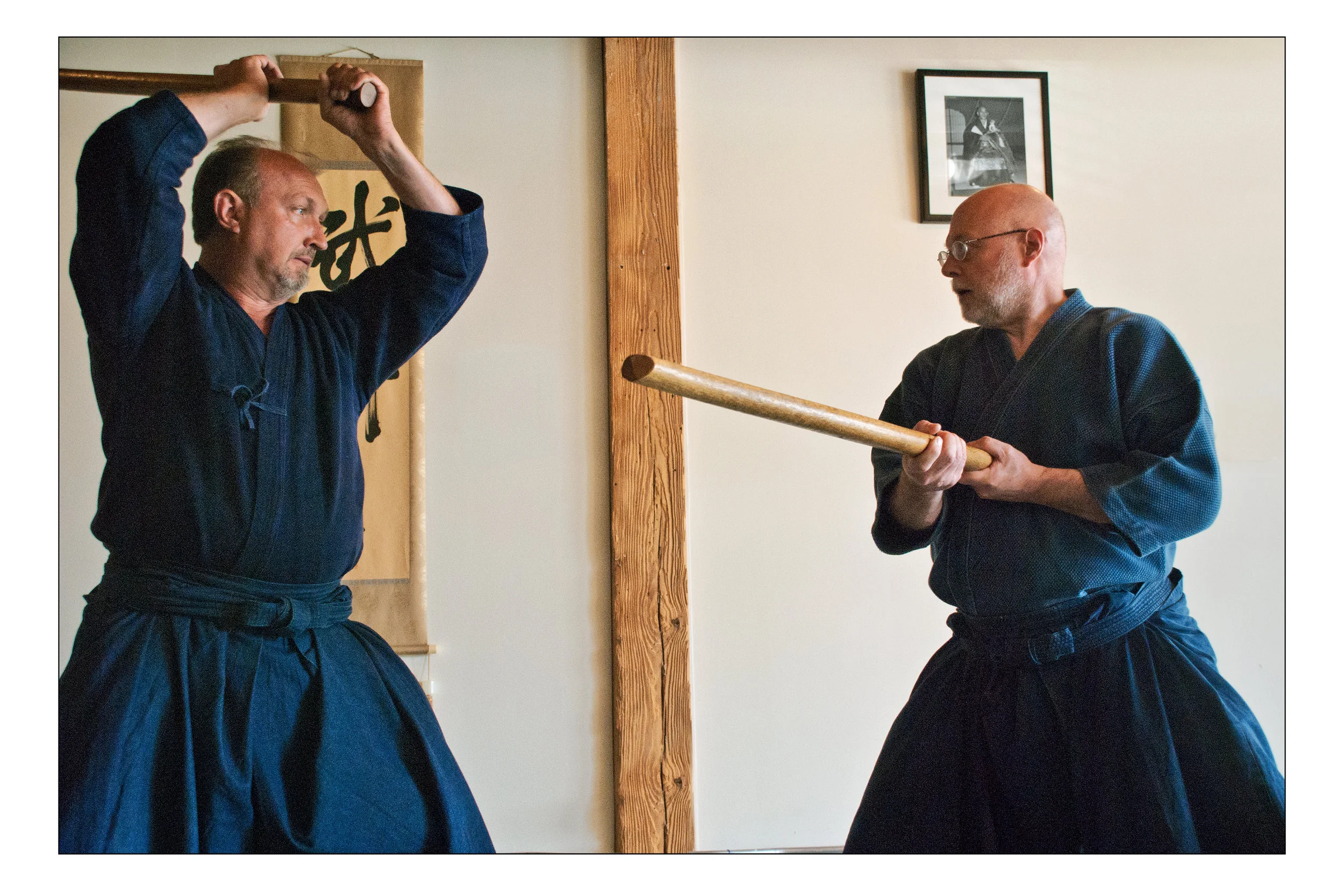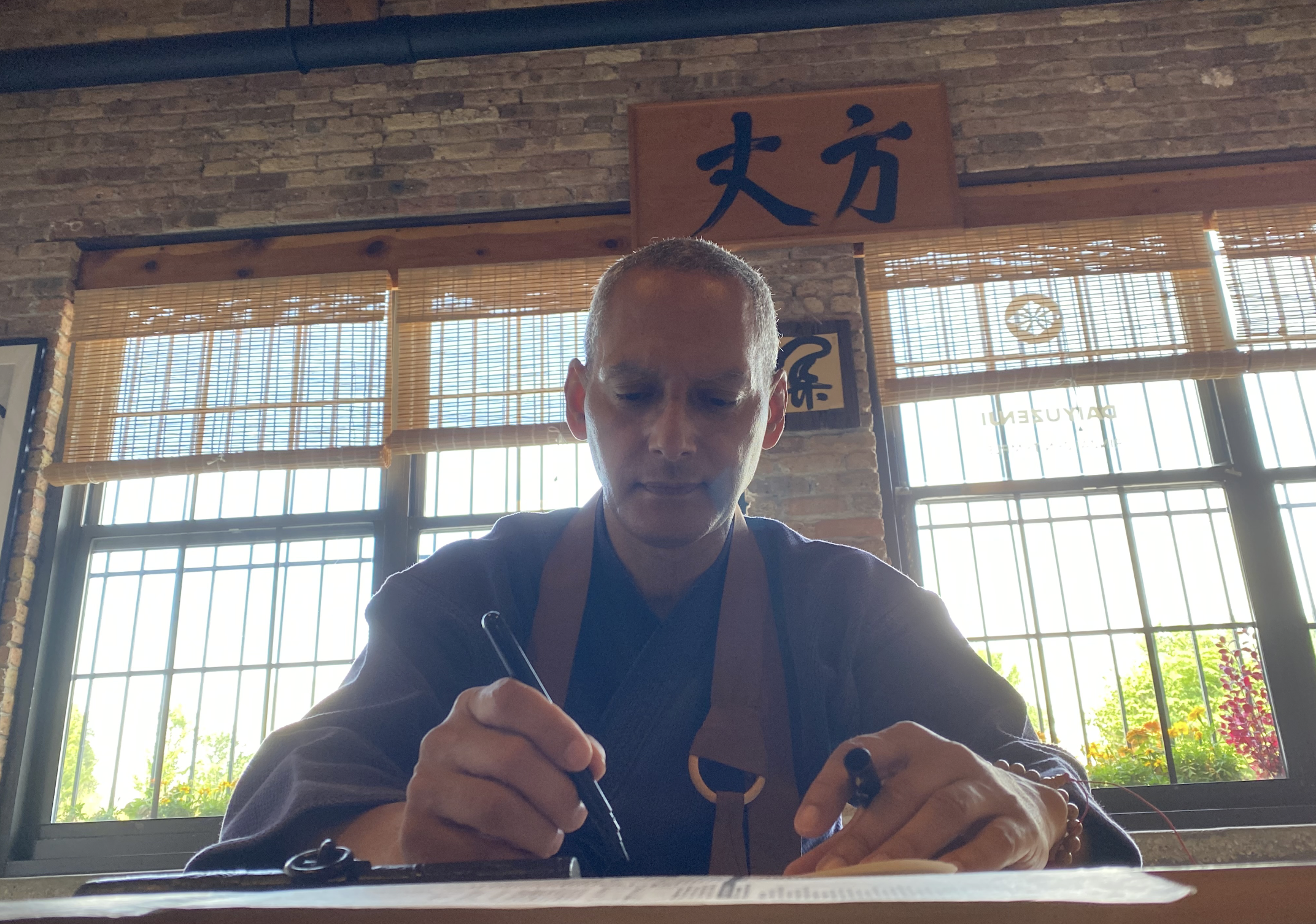Our “zen, ken, sho” tradition emphasizes the unity of Zen training and embodied activity by teaching complementary practices beyond seated meditation. Ken, meaning “sword,” refers to physical culture and disciplines that cultivate vigorous energy, e.g., martial arts, including hojo. Sho means “brush” and symbolizes fine arts, such as calligraphy, flower arrangement, or any means to develop focus and sensitivity through aesthetic refinement. Ultimately, the goal is to take advantage of life’s opportunities to unite the body, breathe, and concentrate in embodying the Zen way of being, to refine the human being, and to manifest wisdom in activity.
Zen training is intended to efficiently convey unshakeable confidence in one's own natural mind as both the path and the fruit of the Way. Training ceaselessly and revealing this wisdom in the play of daily activities, freedom and liberation naturally unfold. Zen is extremely direct, and its methods can seem severe. But those who undertake its practice may attain deep realization within this very life. The authentic expression of such realization is compassion.
“Zen without the accompanying physical experience is nothing but empty discussion. Martial ways without truly realizing the “Mind” is nothing but beastly behavior. We agree to undertake all of this as the essence of our training.”
Zazen (seated Meditation) AND Koan Training
The Japanese word zen comes from the Chinese word ch’an, which itself comes from the Sanskrit dhyana, meaning “meditation.” Zen is, therefore, in other words, the “meditation school” of Buddhism, earning this name by its specialization in meditative practices and a direct engagement with the existential questions of Buddhism. Once a student has gained some ability to do zazen, they may request to begin formal koan training with our teacher. This practice involves the use of a traditional curriculum of many koans, a somewhat untranslatable word that literally means something like “public case,” one of which will be assigned at a time to facilitate the student’s experiential study of Zen. The student presents their understanding to the teacher in formal, private interviews called sanzen which occur regularly during our programming. Only fully authorized lineage holders in our tradition may administer koan training to students.
Jikishinkage-ryu Hojo (Sword forms)
“As you live your life, you become hindered by all manner of impurities. Through the act of continuously discarding these pollutants, you must try to return to your original nature just as it was when you were a baby.”
The Hojo is a medieval Japanese sword form consisting of four parts (kata), each representing one of the four seasons. Omori Sogen, a master swordsman, believed it to be a highly effective martial art supplementing Zen training. It is performed relatively slowly, deliberately, and meditatively by a pair of participants synchronizing their movements closely; one of these in the role of shin, or “mind,” the other mirroring as kage or “shadow.” The study of the hojo kata is enormously beneficial in learning the use of the body and breath in Zen training and extending that way of being into other life activities.
Shodo (way of the brush)
Shodo, or Japanese calligraphy, is a widespread Japanese cultural practice and is practiced at Daiyuzenji specifically as a form of Zen training. We focus on posture, breath and the observation of how subtleties in the aesthetics are affected by our condition.
Okyo (Chanting prACTICE)
Okyo refers to the practice of chanting Buddhist sutras, mantras, or scriptures, an important and traditional part of Japanese Zen Buddhism. The term "okyo" (お経) itself is derived from the Japanese word "sutra" (kyō).
Chanting sutras is a form of spiritual practice that helps deepen one’s connection to the teachings of the Buddha. It is often used as a way to cultivate mindfulness, concentration, and devotion. At Daiyuzenji, chanting (okyo) is utilized as a method that combines posture, breath, and sound to greatly enhance meditation practice. By understanding the relationship between mind and body, practitioners can engage in meditation with greater comfort, clarity, and a more grounded approach.
The meditative aspect of this practice, often accompanied by bells and drums, creates a rhythmic repetition of phrases that can induce a meditative state. This helps practitioners focus their minds and enter deeper states of awareness. Group chanting also fosters a communal atmosphere where voices blend together, enhancing the meditative and spiritual experience for participants. However, practitioners are encouraged to chant on their own as part of their daily practice.
Although okyo traditionally refers to the chanting of sutras, mantras, and dharanis are also chanted at Daiyuzenji. These are integral components of temple rituals and ceremonies and are used in services, funerals, memorials, and other observances. Many of these services can be offered by Daiyuzenji upon request.
Shakyō (Sutra Copying)
Shakyō, or sutra copying, is a traditional Zen practice of writing out Buddhist texts by hand. The focus is not on calligraphy skill but on slowing down, breathing, and placing attention into each stroke.
Through steady practice, shakyō becomes a way to settle the mind, strengthen concentration, and bring the teachings directly into one’s daily life.
Zazenkai, Sesshin and Shojin Ryori
We offer a yearly schedule full of zazenkai (short, informal retreats), sesshin (longer, intensive, formal retreats), and other special events related to our signature methods of Zen practice. Sesshin is a concentrated period of training, a mix of practices to “gather the heart-mind." It focuses on zazen but includes calligraphy, short periods of mindful work in the zendo, formal temple-style meals, dharma talks, and individual meetings with our teachers. Longer events feature shojin ryori cuisine, a traditional set of monastic, mostly vegan recipes prepared according to Buddhist principles.
RECOMMENDED TEXTS FOR BEGINNERS
An Introduction to Zen Training by Omori Sogen
Omori Sogen: The Art of a Zen Master by Hosokawa Dogen
The Rinzai Zen Way by Meido Moore






